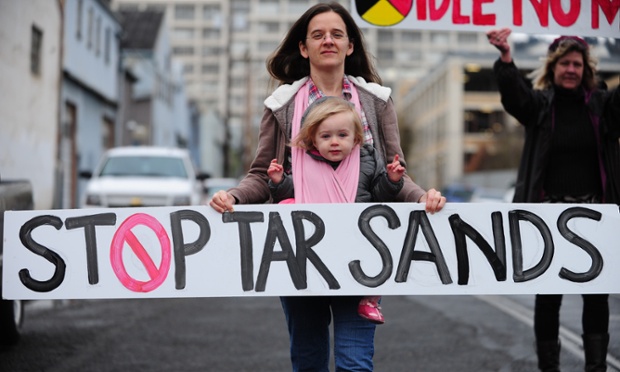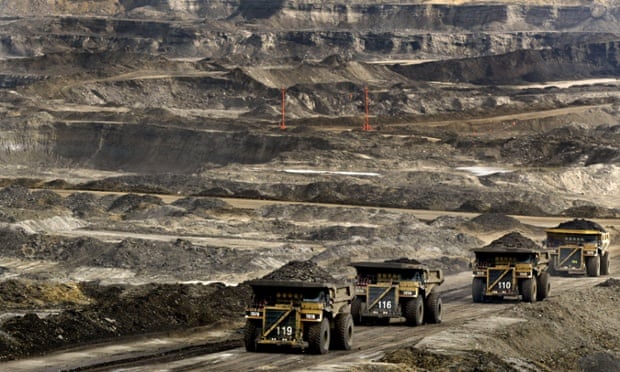Protests helped stymie three major tar sands projects this year, as industry is beset with transportation problems

by: Arthur Nelsen, The Guardian
Anti-tar sands campaigns have cost the industry a staggering $17bn (£11bn) in lost revenues, and helped to push it onto the backfoot, according to a study by the Institute for Energy Economics and Financial Analysis (IEEFA), and Oil Change International.
Another $13.8bn has been lost to transportation bottlenecks and the flood of cheap crude coming from shale oil fields, says the Material Risks report, which presents the first quantification of the impact that environmental campaigners have had on the unconventional energy business.
“Industry officials never anticipated the level and intensity of public opposition to their massive build-out plans,” said Steve Kretzmann, Oil Change International’s executive director. “Legal and other challenges are raising new issues related to environmental protection, indigenous rights and the disruptive impact of new pipeline proposals. Business as usual for Big Oil – particularly in the tar sands – is over.”
The industry is currently facing a decline in increased capital expenditure on new tar sands projects, due to problems in transporting the crude, which the study links to public campaigns.
While industry profits continue to fall, the report says that lack of market access helped to stymie three major tar sands enterprises in 2014 alone – Shell’s Pierre River, Total’s Joslyn North and Statoil’s Corner project – which together would have emitted 2.8bn tonnes of CO2.
Protests by environmentalists have been swollen by the presence of first nations communities, angry at the environmental damage they fear the industry could wreak on their ancestral lands.
“The taking of resources has left many lands and waters poisoned – the animals and plants are dying in many areas in Canada,” says the Idle No More manifesto. “We have laws older than this colonial government about how to live with the land.”
“Tar sands producers face a new kind of risk from growing public opposition,” said Tom Sanzillo, director of finance at IEEFA, and one of the lead authors on the report. “This opposition has achieved a permanent presence as public sentiment evolves and as the influence of organisations opposed to tar sands production continues to grow.”

Canada has staked its energy future on a massive expansion of tar sands, which hold the world’s third largest reserve of crude after Saudia Arabia and Venezuela.
But the huge amounts of water and solvents needed to extract oil from bitumen dramatically boost greenhouse gas output and, on latest production forecasts, will increase Canada’s CO2 emissions by 56 megatonnes by 2020.
The tar sands production process involves steam injection, strip mining and refining, and leaves environmental scars ranging from clear-cut forests to toxic tailing ponds and destroyed farmland.
This has pushed the focus of environmental and indigenous land rights protests onto export pipelines, such as the stalled Keystone XL project to send tar sands crude to the US.
According to the new paper, the industry’s current inability to build new pipelines has the potential to cancel most, if not all, planned new projects.
It says that the 6.9bn barrels of tar sands this could still leave underground by 2030 would be the equivalent of an additional 4.1bn tonnes of CO2 emissions – or the same as 54m average passenger vehicles, over the same period.
